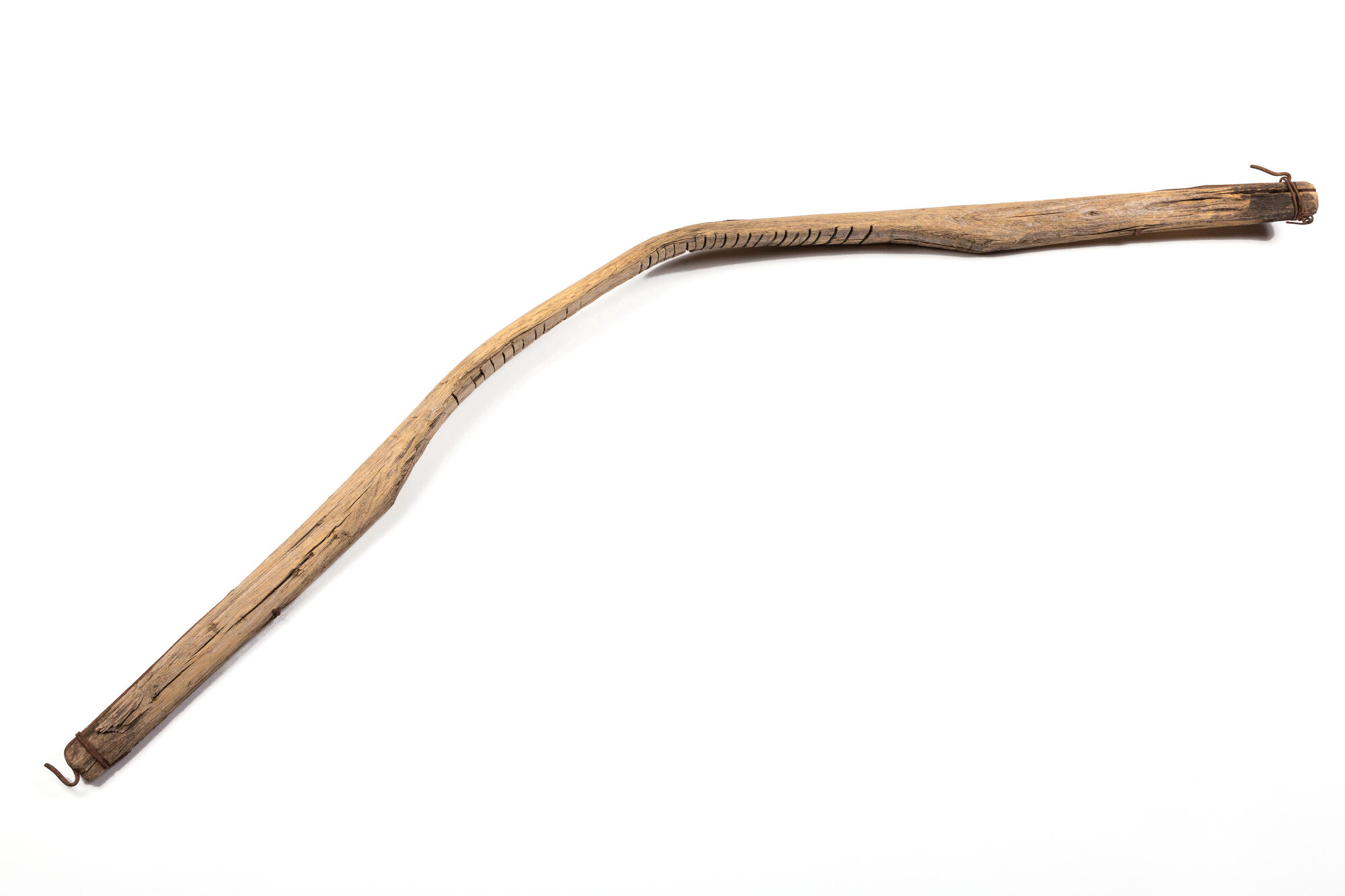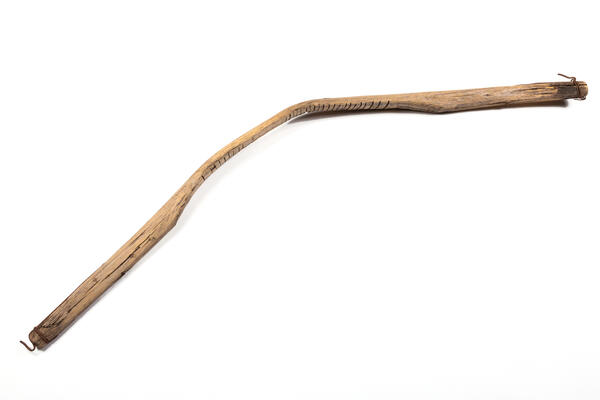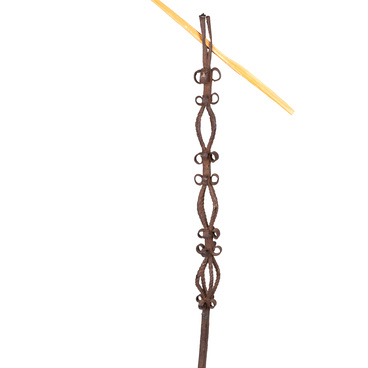Throughout history, water has been the most important resource. Besides the fact that an adult needs to drink, on the average, about 2 liters of water every day, without a source for it it is impossible to imagine everyday life, as well as any kind of agricultural activity. That is why the shoulder yoke, a wooden device in the form of a pole for carrying two buckets of water at the same time, can rightfully be called a paramount item in rural life.
Most frequently, the shoulder yoke took the form of an arc. This is the kind of shoulder yoke that is showcased in the exposition at the Ethnography Hall, and it was produced in the 20th century. The wood used to make the shoulder yoke had to be light, strong, flexible, and uniform, while also resistant to cracking. Therefore, most often birch, hazel, maple, and beech were used for the yoke, with pine and spruce somewhat less frequently.
A post from 5–7 centimeters thick, and from 190–210 centimeters long, was usually selected as the work material to make the yoke. Each semi-finished good was cut to a certain thickness in the middle, bent, and then steamed: it was soaked in a pond and heated over the flame from a fire, or buried in the ground at the site of the future fire. Steaming was required to achieved the curved shape of the future shoulder yoke’s arm. Then, metal overlays with hooks were fastened to its edges. Also, the yoke was sometimes painted to give it an elegant, festive look.
Yokes were also made that were cut from a wide and strong, straight board. This kind of board narrowed towards its ends, and in the middle it had a special notch for the neck. Buckets of water were attached to long hooks that dangled from the ends of the frame. However, the bent yoke was much more widespread. In particular, this is because it lay more comfortably on the shoulders, and the buckets fixed at the ends of the yoke’s arm in recesses especially cut for this purpose hardly swayed at all during walking.
The yoke helped a person carry two buckets of water several hundred meters without becoming fatigued by shifting the yoke from one shoulder to the other. Moreover, carrying water on a yoke gradually turned into an entire ritual. On the way to fetch water, the empty buckets were supposed to be held in the left hand, and the yoke itself in the right. At the well, the bucket on the yoke is fixed first at the back and then at the front. The main thing when carrying water is maintaining balance.
Most frequently, the shoulder yoke took the form of an arc. This is the kind of shoulder yoke that is showcased in the exposition at the Ethnography Hall, and it was produced in the 20th century. The wood used to make the shoulder yoke had to be light, strong, flexible, and uniform, while also resistant to cracking. Therefore, most often birch, hazel, maple, and beech were used for the yoke, with pine and spruce somewhat less frequently.
A post from 5–7 centimeters thick, and from 190–210 centimeters long, was usually selected as the work material to make the yoke. Each semi-finished good was cut to a certain thickness in the middle, bent, and then steamed: it was soaked in a pond and heated over the flame from a fire, or buried in the ground at the site of the future fire. Steaming was required to achieved the curved shape of the future shoulder yoke’s arm. Then, metal overlays with hooks were fastened to its edges. Also, the yoke was sometimes painted to give it an elegant, festive look.
Yokes were also made that were cut from a wide and strong, straight board. This kind of board narrowed towards its ends, and in the middle it had a special notch for the neck. Buckets of water were attached to long hooks that dangled from the ends of the frame. However, the bent yoke was much more widespread. In particular, this is because it lay more comfortably on the shoulders, and the buckets fixed at the ends of the yoke’s arm in recesses especially cut for this purpose hardly swayed at all during walking.
The yoke helped a person carry two buckets of water several hundred meters without becoming fatigued by shifting the yoke from one shoulder to the other. Moreover, carrying water on a yoke gradually turned into an entire ritual. On the way to fetch water, the empty buckets were supposed to be held in the left hand, and the yoke itself in the right. At the well, the bucket on the yoke is fixed first at the back and then at the front. The main thing when carrying water is maintaining balance.










